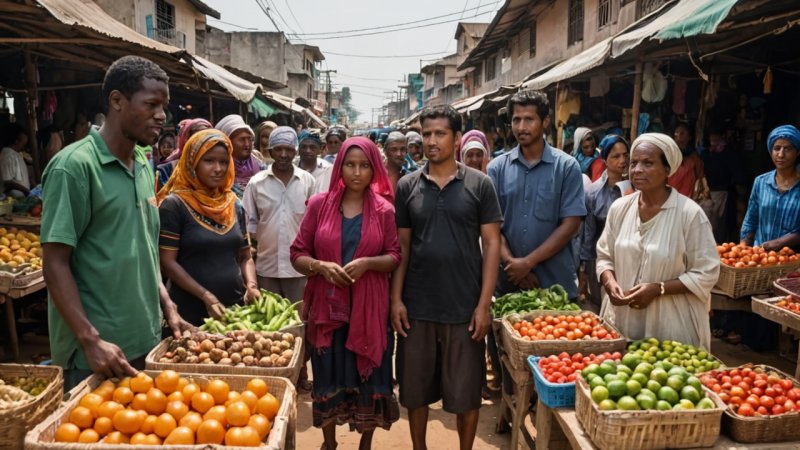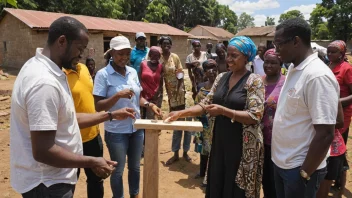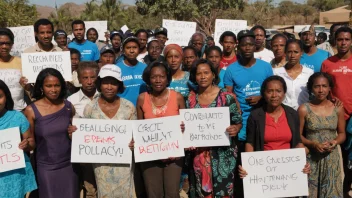The complexities of our interconnected world reveal an undeniable truth: the global economy does not exist in a vacuum. Every economic trend, whether it be a recession in a major economy or a surge in commodity prices, reverberates across borders, influencing the lives of individuals in local communities. Understanding the impact of these global economic shifts on local poverty levels is crucial for anyone interested in humanitarian aid and social justice. As economies fluctuate, the effects are often felt most acutely by the most vulnerable populations, who find themselves navigating an increasingly precarious existence. This article will explore how global economic trends influence local poverty, examining various factors that contribute to this phenomenon and highlighting important initiatives that seek to alleviate the suffering of those affected.
Global Economic Trends and Their Local Effects
Global economic trends can encompass a wide array of factors, including trade policies, currency fluctuations, international market demands, and even political instability. Each of these elements can have a profound impact on local economies, particularly in developing nations where many communities rely heavily on external markets.
For instance, when a major economy like China or the United States experiences a downturn, the ripple effects can lead to decreased demand for exports from poorer nations, resulting in job losses and reduced income for local workers. Similarly, fluctuations in commodity prices—such as oil or agricultural products—can dramatically alter the economic landscape. Farmers in developing countries may find themselves unable to sell their goods at a fair price, pushing them deeper into poverty.
The Role of Trade Policies
Trade policies can significantly impact local economies, especially in countries that depend on exports. Tariffs, trade agreements, and protectionist policies can alter the competitive landscape, affecting local jobs and income levels. For example, when tariffs are imposed on goods from a specific country, it can disrupt supply chains and lead to job losses in industries reliant on exports.
In many cases, these trade policies are influenced by global economic trends and political agendas, often leaving local communities in a precarious position. Advocacy for fair trade practices can help mitigate some of these impacts, promoting equitable trade that benefits both producers and consumers.
Currency Fluctuations and Local Purchasing Power
Currency value is another critical factor that can influence local poverty levels. When a country's currency weakens against major currencies, the cost of imports rises, leading to inflation and reduced purchasing power for local communities. This situation can exacerbate poverty, as families struggle to afford basic necessities like food, healthcare, and education.
Conversely, when a currency strengthens, it may result in lower prices for imports, potentially benefiting consumers. However, this can also lead to a decline in export competitiveness, which could harm local industries reliant on foreign markets, thus creating a paradoxical effect on poverty levels.
Case Studies: The Impact of Global Economic Trends
To better understand the impact of global economic trends on local poverty levels, it is useful to examine specific case studies from around the world. These examples illustrate the complex interplay between global forces and local realities.
Case Study 1: The 2008 Financial Crisis
The 2008 financial crisis serves as a stark example of how global economic downturns can affect local poverty levels. As financial markets collapsed, countries around the world faced economic contractions. In many developing nations, remittances from abroad—crucial for many families' survival—plummeted as jobs were lost in wealthier countries. This decline pushed many families into poverty, highlighting the interconnectedness of the global economy.
Case Study 2: The COVID-19 Pandemic
The COVID-19 pandemic further exemplified how global crises can exacerbate local poverty. Lockdowns and restrictions led to job losses, particularly in sectors like tourism and hospitality, which employ millions in developing countries. In many communities, the inability to work meant that families could not afford basic necessities, leading to increased food insecurity and health challenges.
Initiatives Addressing Global Economic Challenges
Given the profound impact of global economic trends on local poverty levels, it is essential to explore initiatives that aim to address these challenges. Various organizations and movements are working to create systemic change and support vulnerable communities.
Fair Trade Organizations
Fair trade initiatives promote equitable trading relationships, ensuring that producers in developing countries receive fair compensation for their goods. By supporting fair trade products, consumers can help create a more just global economy that uplifts local communities and reduces poverty.
Microfinance Programs
Microfinance programs have emerged as a powerful tool for poverty alleviation. By providing small loans to individuals in developing countries, these programs empower entrepreneurs to start businesses, generate income, and improve their living conditions. Microfinance can help communities become more resilient to global economic fluctuations.
How Individuals Can Get Involved
While global economic trends may seem overwhelming, individuals can play a significant role in addressing local poverty levels. Here are some ways to get involved:
- Educate Yourself: Understanding the complexities of the global economy can help you see how your actions impact local communities.
- Support Fair Trade: Choose to purchase fair trade products to support equitable trading practices.
- Volunteer: Get involved with local organizations that focus on poverty alleviation and community development.
- Advocate: Raise awareness about issues related to global economic trends and their impact on local poverty levels.
Conclusion
The relationship between global economic trends and local poverty levels is complex and multifaceted. As we navigate an increasingly interconnected world, it is crucial to recognize how our actions and decisions can ripple outwards, affecting communities far from our own. By understanding these dynamics, supporting initiatives that promote equity, and getting involved in local efforts, we can contribute to a more just and compassionate world. Together, we can work towards alleviating poverty and fostering healthier, more resilient communities for all.






